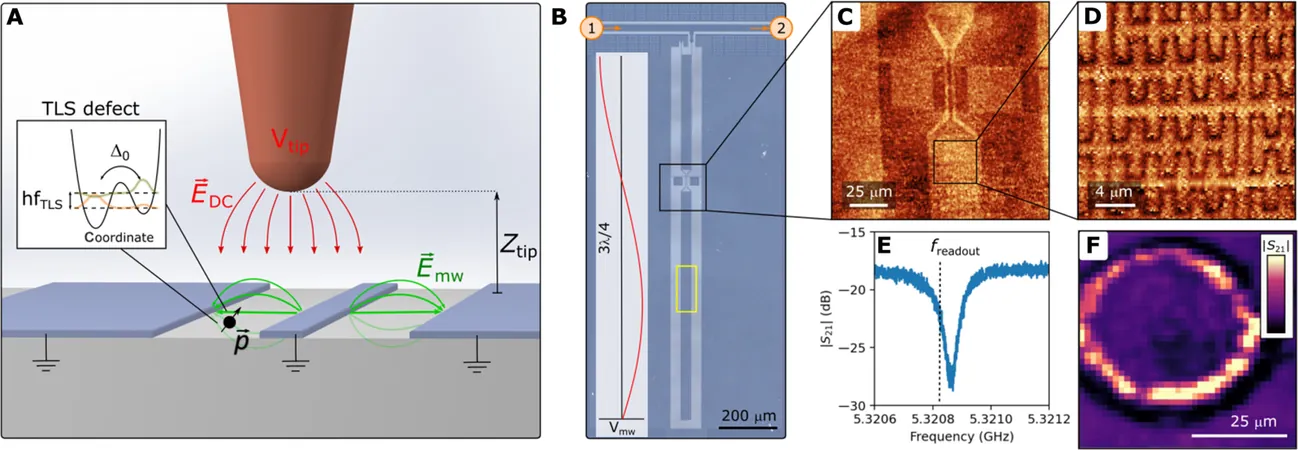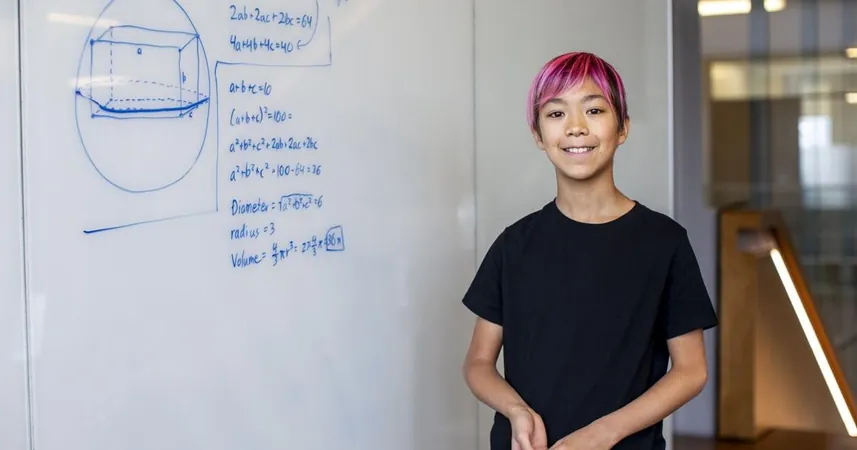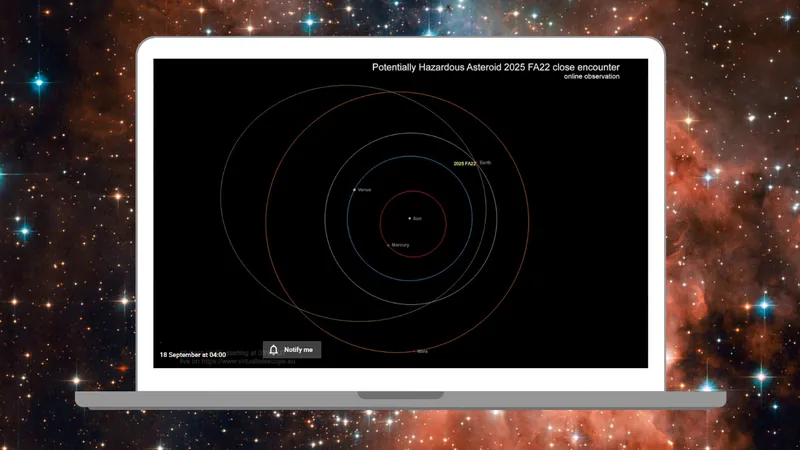
Game-Changer: Individual Defects in Superconducting Quantum Circuits Captured for the First Time!
2025-07-07
Author: Benjamin
Breakthrough Imaging Reveals the Hidden Enemy of Quantum Computing
In an unprecedented leap for quantum technology, scientists at the National Physical Laboratory (NPL), in collaboration with Chalmers University of Technology and Royal Holloway University of London, have successfully imaged individual defects in superconducting quantum circuits. This groundbreaking achievement sheds light on tiny material imperfections known as two-level system (TLS) defects.
Why This Discovery Matters!
Published in the esteemed journal Science Advances, this research is a crucial stepping stone toward understanding how these microscopic defects impact quantum states. By effectively locating and visualizing these defects, scientists are paving the way for the creation of stable and reliable quantum computers, which could revolutionize fields such as cybersecurity, optimization, drug discovery, and clean energy.
Decoherence: The Quantum Computer's Worst Nightmare
One of the biggest challenges facing quantum computers is decoherence—the phenomenon where fragile quantum states lose information irretrievably. For superconducting circuits, which are favored by several industry frontrunners, TLS defects are the primary culprits behind this decoherence. Despite being known for over fifty years, individual TLS defects remained elusive until now.
Unveiling the Hidden Mysteries of Quantum Circuits
Thanks to NPL's innovative new instrument, scientists can finally pinpoint and study these defects in real-time within operational quantum circuits. This advanced tool merges cutting-edge microscopy techniques with quantum circuitry, all housed in a light-tight chamber cooled to just above absolute zero to minimize thermal disturbances.
A Vision Like No Other!
Dr. Riju Banerjee, a senior scientist at NPL and a lead author of the study, expressed his excitement, stating, "For years, researchers have theorized that TLS defects disrupt quantum circuits. Seeing the fluctuations and decoherence caused by each defect is revolutionary. The initial data we gathered depicts a chaotic, noisy liquid sloshing through the circuit, with individual defects appearing as ripples akin to raindrops on a pond."
A Future of Reliable Quantum Computing Awaits!
This breakthrough could lead to the identification and elimination of these defects, dramatically enhancing the performance and reliability of quantum computers. As we stand on the brink of this technological revolution, the quest for stable quantum computing is closer than ever!









 Brasil (PT)
Brasil (PT)
 Canada (EN)
Canada (EN)
 Chile (ES)
Chile (ES)
 Česko (CS)
Česko (CS)
 대한민국 (KO)
대한민국 (KO)
 España (ES)
España (ES)
 France (FR)
France (FR)
 Hong Kong (EN)
Hong Kong (EN)
 Italia (IT)
Italia (IT)
 日本 (JA)
日本 (JA)
 Magyarország (HU)
Magyarország (HU)
 Norge (NO)
Norge (NO)
 Polska (PL)
Polska (PL)
 Schweiz (DE)
Schweiz (DE)
 Singapore (EN)
Singapore (EN)
 Sverige (SV)
Sverige (SV)
 Suomi (FI)
Suomi (FI)
 Türkiye (TR)
Türkiye (TR)
 الإمارات العربية المتحدة (AR)
الإمارات العربية المتحدة (AR)